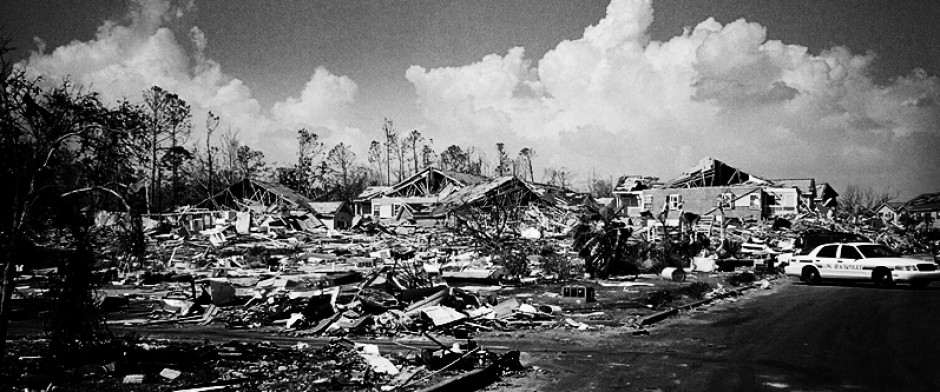In part one of our series on “Prepper Relocation,” I directly addressed a common false logic amongst preppers that led to bad conclusions regarding why one should relocate to Idaho. Specifically, I challenged the idea that a bunker was a viable long term survival strategy for a major catastrophe many prep for such as nuclear war. Simply establishing a second residence in a modern first world location like Santiago, Singapore, or New Zealand offer far better options for survival, both physically and economically, than hiding in a hole while a nuclear war is carried out above you. Today, I continue the slaughter of the sacred cows and challenge the merits of relocating to a site far from other people. As I previously discussed, relocation isn’t a subject to take lightly. It may be the single most important decision a prepper makes and therefore any plan should be heavily vetted before time and money is invested in executing it. Therefore, one must consider counter arguments to contemporary “expert” recommendations. By leveraging the information in this series, you will be far better prepared to develop a personalized answer to what truly is you “best prepper place to relocate.”
Contemporary prepper logic states that the farther your relocation site is from dense centers of population, the better. In fact, the magic number often touted is that you must be at least 300 miles from any major population center. However, is this really the case? This is very important because if 300 miles is accurate, it severely constrains your relocation options. If it is not a valid constraint, then suddenly you have many good options for relocation depending on the specific scenario you are prepping for. As such, let’s examine what that conclusion is premised upon. Breaking the theory down, you have two main hypotheses to vet. The first is that 300 miles provides a necessary and adequate buffer from an urban center. The second is that from said urban area a horde of starving refugees will emerge and overrun your redoubt.
Let me be the first to tell you neither hypothesis constituting this prepper theory, which to date has been held up as prepper law, is valid. To begin, the 300 mile metric is nearly useless. Sure it is a good general metric for how far someone can drive on a tank of gas, but that is about as far as its utility can be stretched. Far more complex mechanisms are at work. For example, it assumes no one left before the crisis climaxed, no one thought to bring along extra fuel, no one stopped to get gas, and none of the millions of people living outside of the urban center decided to pick up and leave too. It also discounts the fact people generally will go to a place they know. Most people will not just wander aimlessly like Moses through the Sinai. They will go to the homes of family and friends. This means most rural places irrespective of where they are located tend to remain that way. The hypothetical notion of a wave of people just wandering the countryside like zombies consuming all in their path like a swarm of locusts is utterly ridiculous when actually researched. Even today, you can see refugees follow logical routes to known points where they can obtain help. The middle of nowhere West Virginia will not be any higher on that short list of places for refugees to go than middle of nowhere Idaho when you have plenty of other cities, FEMA distribution points, and military bases that people will go to first. All this said, I am not discounting the benefits of being out of the middle of a major city and self-sufficient during a crisis, I am just saying you don’t need to move all the way to Idaho to obtain those benefits.
The second major fallacy this theory is predicated upon is that people are your enemy and if you have anything resembling neighbors within a day’s drive of your property, they are a threat. What I find when analyzing this is that we have a huge body of contemporary case studies that debunk this theory. What you find is that people by nature are creatures of habit. This means even after a major collapse, most people are biased to continue to try and maintain their same habits. We saw this post collapse in the Soviet Union when people still went to work even though they weren’t being paid because that is what they always did. We also saw this in areas of the US where industry and jobs left 30 years ago or more. People are still living in these cities and towns in total poverty waiting for the good times to come back even though the jobs are gone for good and if they moved even a half tank of gas away, they could have found new work. Another example is with guns. Most people are good and good people generally stay good law abiding people irrespective of a gun placed in their hand. Criminals will stay criminals, but can and always have been dealt with by the majority of good people.
Some would immediately argue the examples given are not extreme enough to be comparable. Therefore, let’s examine the worst cases of war, famine, economic collapse, and total destruction. What we find is that just like in the previous examples, people are still reluctant to leave and don’t turn on each other in any systemic widespread fashion. This is repeatedly demonstrated in places totally destroyed by wars such as Afghanistan and Iraq. In both warzones, most people remained in their cities and towns irrespective of the violence. Granted, it wasn’t advisable to stay and they would have been far better off if they had bugged out, but they stayed. The urban populations did not venture into the surrounding rural areas in mass destroying all in their wake as the 300 mile theory would predict. Look at what it took for refugees to leave Syria. They literally had to be facing imminent death after the total loss of their homes and families before they began the trek away from their homes. However, they didn’t stray aimlessly. The refugees followed very predictable routes to safe havens they knew would offer aid. Further, although we can debate the merits of their culture and religion, the vast majority still maintained their moral and ethical standards just as they did in Syria (for better or worse).
The actions of the people are no different when studying how people reacted to utter poverty and famine in places such as Ethiopia, Somalia, and Niger. Although tribal warlords and criminal violence are common, there still is no precedent being set for mass migrations out of the cities. In fact, it appears people actually came to the cities in many situations because they viewed their options better than trying to survive away from others on their own. This is noteworthy because it appears that in these situations, people that were isolated, were actually more, not less, vulnerable. This was reinforced by what was seen in war zones where lone individuals and small villages were far more vulnerable to insurgent actions of groups like the Taliban.
Economic collapses are occurring all over the world in places like Venezuela, but again, there is nothing to suggest that the lack of food and starvation is causing a mass exodus from Venezuela’s major cities and the surrounding burbs are being ransacked. Instead, people mobbed grocery stores and supply depots within the cities and flooded border crossings where food could be purchased a short distance into Colombia. The hinterlands even a short distance out of the major cities remain undisturbed. Domestically, we saw the same thing during the Great Depression and post-World War I in Weimar Germany. Again, people were starving, but did not wipe out the surrounding suburbs. Instead, like already witnessed in the previous examples, people actually went to the cities for support.
The evidence at this point should be overwhelming to anyone other than the brain dead and hopelessly brainwashed. Nonetheless, let’s look at more examples. During massive large scale natural disasters around the world guess what we witness? Coming as no surprise now, we see that people do not suddenly wander about aimlessly looting and killing. Instead, people are drawn closer together in mutual support. People quickly move to organize and rebuild, not descend into a primal state of anarchy, which serves no survival purpose for the species as a whole. Arguably humans are designed to form into mutually supportive groups, which have always been necessary for human survival. For example, the 2004 Indian Ocean Tsunami was truly cataclysmic, wiped out entire coastal villages, and killed over 240,000 people yet no mass exodus occurred from urban areas. The earthquake and tsunami that destroyed the Fukushima Nuclear Plant in Japan also erased entire villages and continues to irradiate a growing area and threatens Tokyo directly. Tokyo is one of the world’s largest cities and the people are living within a very short distance of a nuclear disaster still in meltdown that could catastrophically deteriorate at any time, but again, no hordes or exodus of people have ran for the mountains. In New Orleans after Katrina and in Haiti after their most recent major earthquake people were so tied to habit that many literally sat and waited for help until they died instead of becoming a refugee and overrunning the suburbs. Even looking back to the worst days of World War II and the American Civil War one can’t find large scale accounts of the hordes leaving the cities and wiping out the surrounding areas even after massive destruction like the burning of Savannah or the firebombing of Dresden. In fact, after conducting in-depth case studies, the only place that this Hobbesian world of anarchy exists is in the imagination of James Rawles and the heads of people fueled by Hollywood doomsday movies.
So what are the lessons to be learned? The key takeaways today are that the relocation rule of 300 miles from any urban center and that a wave of refugees will overrun your redoubt are myths. As important, it is critical to understand that the research I have been conducting completely changes the most fundamentally held theories adhered to by preppers today. Up until now, if you were going to survive most catastrophic events, it was believed you would have to move to a small pocket of land in the North West. What I am demonstrating through a mix of case studies and large-N analyses of global crises is that you have far more options than previously believed. You don’t need to leave your job, family, and community behind to effectively prepare for most scenarios. Further, you do not need to move to the far reaches of the earth or to Idaho to gain the benefits of being outside the immediate dangers of the mob. In fact, there appears to be a point where being too isolated becomes detrimental and actually counterproductive to your survival in most crisis scenarios. It also appears that rather than running from the cities, the mass migration during a crisis is actually too the cities. These game changing conclusions are just the beginning. Look for part three in the coming days where even more deeply held prepper theories are debunked when actually analyzed.
By Guiles Hendrik
September 2, 2016
See Part One of the series: http://www.lastminutesurvival.com/2016/09/01/prepper-relocation-part-i-questioning-the-common-logic/



Is this my husband writing this article. He has been saying this for years also–he’s a historian.
Very well put. You will undoubtedly be the focus of attack by many, but I think you are correct in your observations. The widespread belief that cities somehow become killing zones during time of disaster, and that hordes of people randomly exit the cities to loot surrounding areas is unfounded in actual data. Everyone keeps saying: “look at history”, but I find that none of those people actually do. I grew up in Eastern Europe during severe SHTF, and things are much different than what the theoretical ideas on the subject would indicate. The reality is much closer to what you have described, and has been demonstrated over and over again.
“No man is an island.” Better to be in a convivial community that is big enough to have the important skill sets redundantly represented.
Disagree.
Population centers of gravity become the first targets of corrupt governments (to include US), collective groups of criminals (to include domestic and foreign terrorists), potential needy millennials, potential needy genXers, and desperate, hungry people. Those who stay will exhaust food and resources. This will impede their mental, emotional, physical and other energies, and resources so that the 300 mile range would be effective.
Regarding Afghanistan and Iraq…population centers of gravity and known resource centers attract bad guys (to include government troops). Self preservation entities will revert to and coalesce in large towns and cities – their primary purpose is self survival. Americans don’t understand that governments kidnap (draft) teenage boys at kiddie movies to serve in that army. Or, gangs influence teenage boys to join gangs/terrorist groups by offering them a “bullet launcher”. The massed locations become recruiting centers and targets.
Gallant, caring, and well raised US soldiers (and marines) attempt to share their food, candy, medical services, barbed wire (repair damaged ranch ranges) and other compassionate actions to lift up the indigenous population. However, cultures prevail – young males conduct machete fights (villages filled with teenagers and adults with one hand or arm) or young kids beat up younger kids taking the candy away that you just gave them. The “yung-uns” learn at an early age… whether US spoiled millennials or cultured third world males.
Although Tasmania (Part I response) sounds enticing (never been their), I believe your articles market to the top 1% of the establishment. For the rest of us who do not have access to aircraft or boats (resources), enough intelligence to give us time, money to afford, or other “meat and taters” to blitz to a secondary country, your scheme is not realistic. Regarding the nuclear blast on the surface, below the curvature of that part of the earth or atmosphere detonation, or, economic collapse, even the top 1% moving to the secondary location (other country) would be challenging…You would have to already be there. If they are already there do you think they would share their heads-up warning or riches and be philanthropic to move the rest of us? Would you? Do you have that location picked out and how many Americans are you planning to move?
To the 95% (my assumption) of preppers who cannot afford to establish a secondary residence abroad, Idaho may be more feasible.
Dave
Oh my, you used the “r” word in your article. OMG, you will be branded as a heretic and you will be forever banished from the geographic area within the declared “Redoubt” zone. You even mentioned “sacred” Idaho. Naughty, naughty. Sarcasm off. Thanks for the article and your thoughtfulness. I often read comments from preppers about sheeple. They fail to recognize that among the prepper community there are numerous sheeple. Many of these folks now live in the “American Redoubt” because of a self promoting individual who wants to be the shepherd. Ha, what a joke.